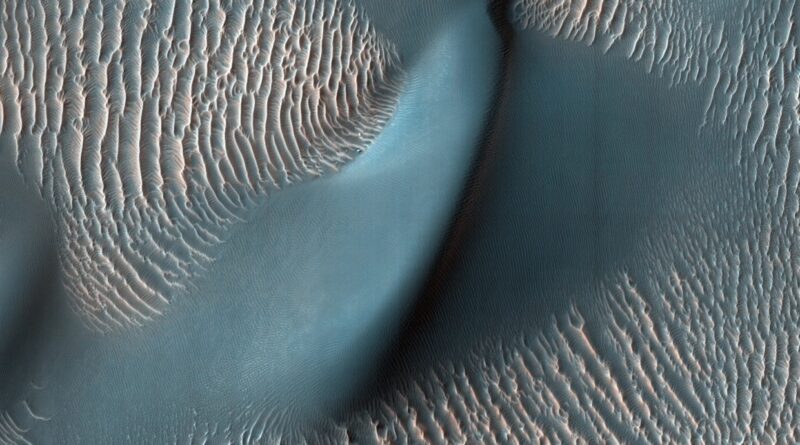New Theory Explains Sand Ripples on Mars & on Earth
Common causes could upend previous understandings.
Sand ripples are fascinating. They are symmetrical, yet wind, which causes them, is very much not. Furthermore, they can be found on Mars and on Earth. They would be even more fascinating if the same effect found on Mars could be found here on Earth as well. What if one unified theory could explain their formation on two different planets of our solar system?
That is what Ben-Gurion University of the Negev physicist Prof. Hezi Yizhaq and Prof. Itzhak Katra and their colleagues from Denmark, Germany, Italy, China, and the US contend in a cover article published in Nature Geoscience.
Sand ripples photographed on Mars by NASA’s Curiosity rover in 2015 showed two distinct patterns — large ripples (meter scale) and a shorter “impact” ripples pattern (decimeter scale). The prevailing theory proposed since then argues that the smaller scale ripples are produced by the impact mechanism of the particles transported by the wind like normal ripples on Earth and the larger ripples form due to hydrodynamic instability like subaqueous ripples. Furthermore, it was believed that the physical conditions that produced them on Mars could not produce them on Earth.
However, Prof. Yizhaq and Prof. Katra have proven experimentally using Ben-Gurion University’s wind tunnel and Aarhus University’s Mars tunnel that such a phenomenon could exist on Earth — we just haven’t noticed it yet because we didn’t know we should be looking for it.
Imitating Martian sand was not easy because it’s finer than sand here on Earth, explains Prof. Yizhaq, but the breakthrough occurred when they decided to try tiny glass balls to represent fine grains of sand.
Furthermore, the international research team has proposed a unified theoretical framework that would explain sand ripples on Mars and on Earth. At its most basic level, sand ripples on Mars caused by wind look like sand ripples on Earth caused by water.
“There is much more research, both fieldwork and experimentally, needed to prove our theory, but it is amazing to propose something so radically new in a field I have been studying for over 20 years. It is exciting to go out and try to find on Earth what can clearly be seen on Mars,” says Prof. Yizhaq.
Prof. Yizhaq is a member of the Department of Solar Energy and Environmental Physics. Prof. Itzhak Katra is a member of the Department of Environmental, Geoinformatics and Urban Planning Sciences.
The research was supported by the Israel Science Foundation (Grant no. 1270/20), the German-Israel Foundation for Scientific Research and Development (GIF) (Grant no. 155-301.10/2018), the National Natural Science Foundation of China, Texas A&M Engineering Experiment Station, Europlanet grant no. 871149, and the Horizon 2020 Research and Innovation Program.
Courtesy of Ben-Gurion University.
Chip in a few dollars a month to help support independent cleantech coverage that helps to accelerate the cleantech revolution!
Have a tip for CleanTechnica? Want to advertise? Want to suggest a guest for our CleanTech Talk podcast? Contact us here.
Sign up for our daily newsletter for 15 new cleantech stories a day. Or sign up for our weekly one if daily is too frequent.
CleanTechnica's Comment Policy
